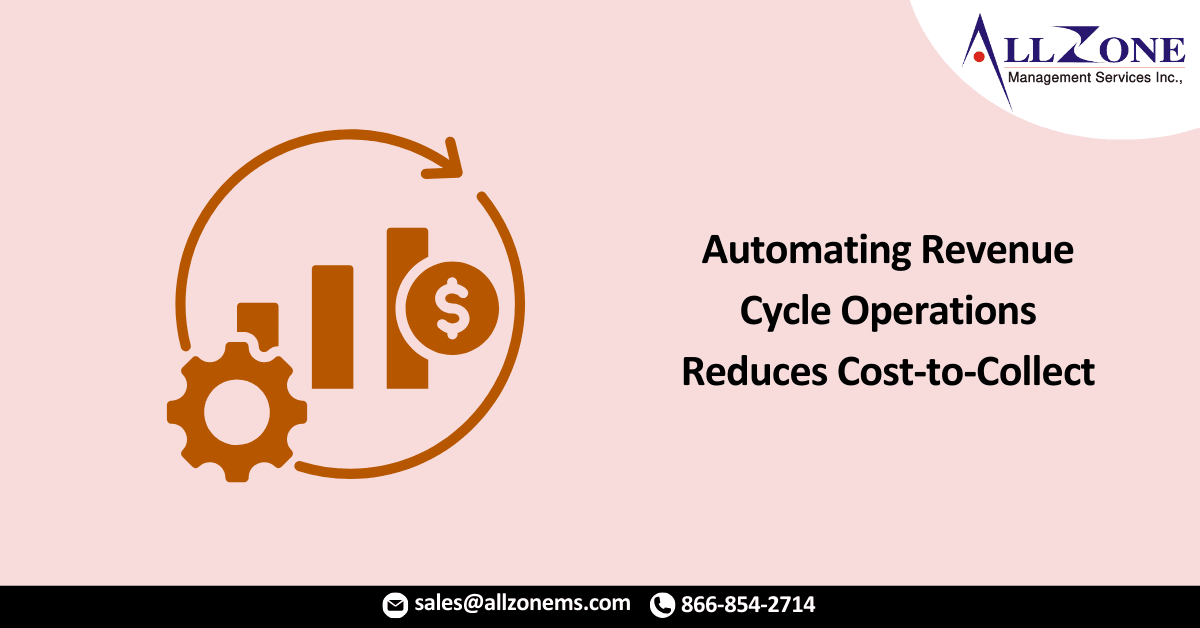Health systems that used automation for revenue cycle operations had an average cost-to-collect of 3.51 percent compared to 3.74 percent for those that did not use automation.
Using automation for revenue cycle operations could lower hospital and health systems’ cost-to-collect by 0.25 percent, according to a survey from the Healthcare Financial Management Association (HFMA).
The survey reflects responses from 556 chief financial officers and revenue cycle leaders at hospitals and health systems across the country. The data was collected between July 8, 2022, and August 2, 2022.
Healthcare financial leaders who leverage automation for revenue cycle operations reported having an average cost-to-collect of 3.51 percent. Almost 40 percent of respondents using automation reported an average cost-to-collect of 2.9 percent or less.
Meanwhile, those who do not use automation reported an average cost-to-collect of 3.74 percent. Half of these respondents reported an average cost-to-collect of 4 percent or higher.
The average cost-to-collect for all respondents was 3.68 percent, with 35 percent of healthcare leaders having a cost-to-collect of 2.9 percent or less and 43 percent reporting a cost-to-collect of 4 percent or higher.
The cost-to-collect refers to costs that drive revenue, such as expenses related to staff, salaries, and technology. Cost-to-collect can be a key performance indicator in revenue cycle success.
Automating revenue cycle operations could potentially save hospitals and health systems millions of dollars.
If a health system has $5 billion in revenue, a cost-to-collect of 3.74 percent without using automation would equal $187 million. If the same health system automated its revenue cycle operations and had a cost-to-collect of 3.51 percent, it would amount to $175.5 million. This signifies $11.5 million in savings from using automation.
Automation is the key differentiator when moving the needle on cost-to-collect and creating large-scale cost savings. Although healthcare revenue cycle leaders have been trying to reduce the rates for years, studies show cost-to-collect has remained stagnant and this collides with significant financial pressures facing most healthcare organizations.
In addition to sharing about their automation use, healthcare financial leaders reported on how their cost-to-collect has changed compared to 2021.
One in five respondents said their cost-to-collect decreased by 0.1 to 0.3 percent, while 38.8 percent reported an increase of 0.1 to 0.3 percent in cost-to-collect. Just over 40 percent reported no change in cost-to-collect compared to the same time last year.
By leveraging automation for revenue cycle management operations, healthcare organizations could help increase accuracy and efficiency and reduce initial denials, which may help lower the cost-to-collect.
In addition, incorporating automation into revenue cycle management can ensure organizations are able to track and collect revenue while maintaining care quality for patients, according to revenue cycle leaders.
Between 2020 and 2021, the number of health systems using revenue cycle automation increased by 12 percent.
For More Information: https://revcycleintelligence.com/news/automating-revenue-cycle-operations-can-reduce-cost-to-collect

